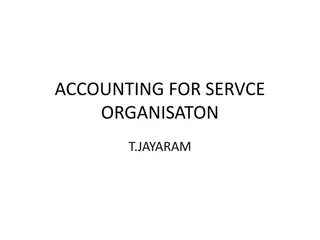Features of Fact Sheets for Events
Fact sheets for events such as drama workshops, yoga sessions, canoeing trips, swimming classes, and dance activities typically include details like dates, timings, locations, and brief descriptions. They often consist of lists, bullet points, headings, sub-headings, pictures, diagrams, and concise sentences to provide essential information in an easily digestible format.
Download Presentation

Please find below an Image/Link to download the presentation.
The content on the website is provided AS IS for your information and personal use only. It may not be sold, licensed, or shared on other websites without obtaining consent from the author.If you encounter any issues during the download, it is possible that the publisher has removed the file from their server.
You are allowed to download the files provided on this website for personal or commercial use, subject to the condition that they are used lawfully. All files are the property of their respective owners.
The content on the website is provided AS IS for your information and personal use only. It may not be sold, licensed, or shared on other websites without obtaining consent from the author.
E N D
Presentation Transcript
Sikhi Book Club Welcome sikhibookclub@gmail.com www.sikhibookclub.com
Ground Rules 1. Punctual attendance 2. The whole book/article of the month must be read 3. Come with an open mind 4. Share your learning and listen to others 5. Keep the discussion relevant 6. Respect each others confidentiality
The style of the book Author comments largely on outsider's opinions of the army European opinions, British opinions Less commentary from a Sikh perspective Is this because of lack of documentation? Is this the author's own prejudice? Author takes each section separately and goes through history Not chronological from beginning to end Makes it difficult to see clearly the army's development as a whole Many numbers and facts within the book
Context 12 misls Drove out the Mughals Rebutted 9 Afghan invasions Recaptured Lahore Misls' interfighting Maharaja Ranjit Singh forcibly reunited the misls Initially through seizing Lahore from another misl Sikh system of government moved from assembly to one of leadership
Aspects of the army Maharaja Ranjit Singh recognised his limitations Settled for paid tributes sometimes Led to conflict in the years to come Employed sepoys from european armies and deserters from the EIC Multifaith, multicultural (E.g. Jean-Baptiste Ventura, Ilahi Baksh) Prevented one group from becoming completely dominant Author eludes to friction in the ranks between Italians, French and other factions Army's colours & flags: white, yellow, red, blue, green Persian script on the flags
The Armies European style regular units (Fauj-i-ain, the regular state army) Feudal army (Jagirdari Fauj) Irregular cavalry (Ghorchurras) Garrison army (Fauj-i-qilajat) Information from surviving payrolls The appearance of Granthis as part of the army battalions in the 1820s Yearly inspection & disciplinary procedures (the use of fines, canes and mutilation) Delay in paying wages was common but accepted as long as payment was made once per year
British Opinion British tensions resulted in them over-estimating the army numbers They were intimidated by the army parades but tried to hide this Lord Auckland's sister Emily Eden wrote about the British discomfort (1838) British intelligence watching throughout Records subsequently evident from their perspective Sikhs were well-equipped for close combat due to sharper swords and more effective protective armour Sikh horsemen met the British charge by lying flat on their horses' necks, heads protected by their turbans and their backs protected by their shields Conflicting accounts of the Sikh's artillery skills Initially not skilful, then equal to the British in skill, then firing rounds much more effectively than the British
Sikh Opinion Sikhs were reluctant to engage in European style army practices At times reluctant to accept the incoming European deserters Preferred to be mounted in the traditional style rather than on foot Led to difficulties advancing and building the cavalry Ranjit Singh was of a similar mindset and was concerned with infantry/artillery Individual guns were named e.g. Fateh Gang Maharaja Ranjit Singh replicated guns which were gifted to him
The Akalis Described as Sikh Fundamentalists by the authors An immortal whose body is unaffected by pain or comfort Remained in their own uniform Portrayed as an unruly group that made Maharaja Ranjit Singh uncomfortable Would not submit to military discipline or training Artist implies their horses were ill-conditioned and that nobody has ever been recorded killed by a chakar Bravery meant they were ideal for desperate attacks Numbers ultimately fell
The Demise of the Army Court rivalries and anarchy after Maharaja Ranjit Singh's death Sons poisoned or assasinated Dalip Singh & wards Rani Jindan/Raja Lal Singh The people to whom Maharaja Ranjit Singh had given power subseqently consolidated this by getting rid of heirs and ministers Army was still important for anyone to assert political dominance Army was bought by those who could pay Deterioration of discipline and training Battle of Sabraon resulted in the army being disbanded























